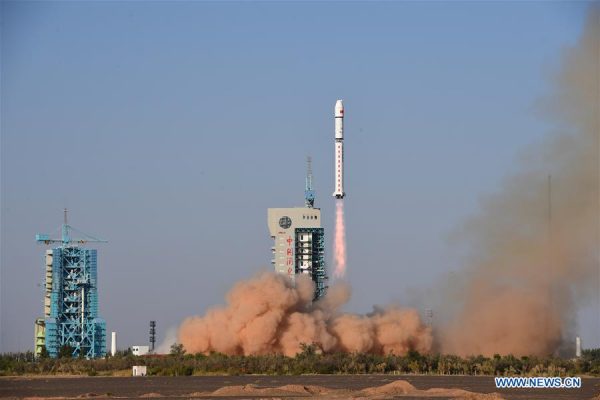China launches environmental monitoring satellite – Spaceflight Now

China launched a Long March 2D rocket Wednesday carrying a Yunhai environmental monitoring satellite into an orbit some 470 miles (760 kilometers) above Earth.
The Long March 2D booster took off from the Jiuquan launch base in the Inner Mongolia region of northwest China at 0054 GMT Wednesday (8:54 p.m. EDT Tuesday), according to the state-run Xinhua news agency.
Liftoff of the two-stage, liquid-fueled Long March 2D rocket occurred at 8:54 a.m. Beijing time.
The Long March 2D arced toward the south from its launch pad in the Gobi Desert to climb into an orbit flying over Earth’s poles.
Xinhua reported the launch was successful, and U.S. military tracking data confirmed the Long March 2D placed its payload into a nearly circular orbit with an average altitude more than 470 miles above Earth. The orbit’s inclination was around 98.5 degrees, according to the satellite tracking data.
The mission marked the 20th orbital launch attempt by a Chinese rocket this year, and the 18th successful satellite launch for China in 2019. It was the 63rd space launch worldwide to reach orbit this year.
According to Chinese state media, the payload aboard the Long March 2D rocket was the Yunhai 1-02 satellite designed for “detecting the atmospheric and marine environment and space environment, as well as disaster control and other scientific experiments.”
The satellite and the Long March 2D launcher were developed by the Shanghai Academy of Spaceflight Technology, a subsidiary of the China Aerospace Science and Technology Corp., the country’s primary government-owned space contractor.
Chinese media did not provide any additional details about the satellite.
Yunhai means “cloud-sea” in Chinese.
The satellite launched Wednesday is the second of China’s Yunhai 1-series missions, following the launch of the first Yunhai 1 environmental satellite in 2016.
Email the author.
Follow Stephen Clark on Twitter: @StephenClark1.






